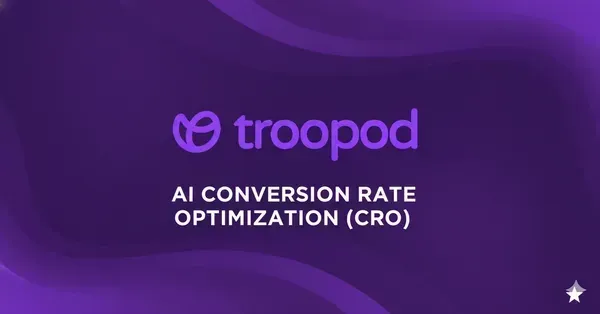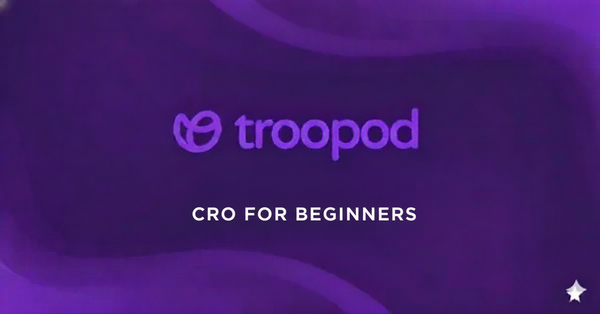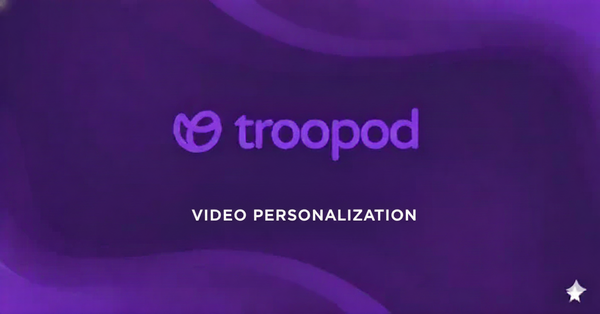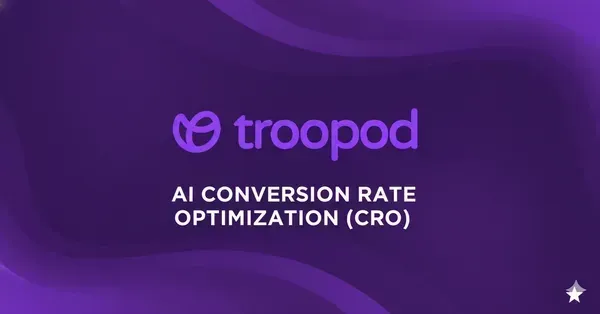CRO 101: The 5 Essential Metrics Every D2C Brand Must Track
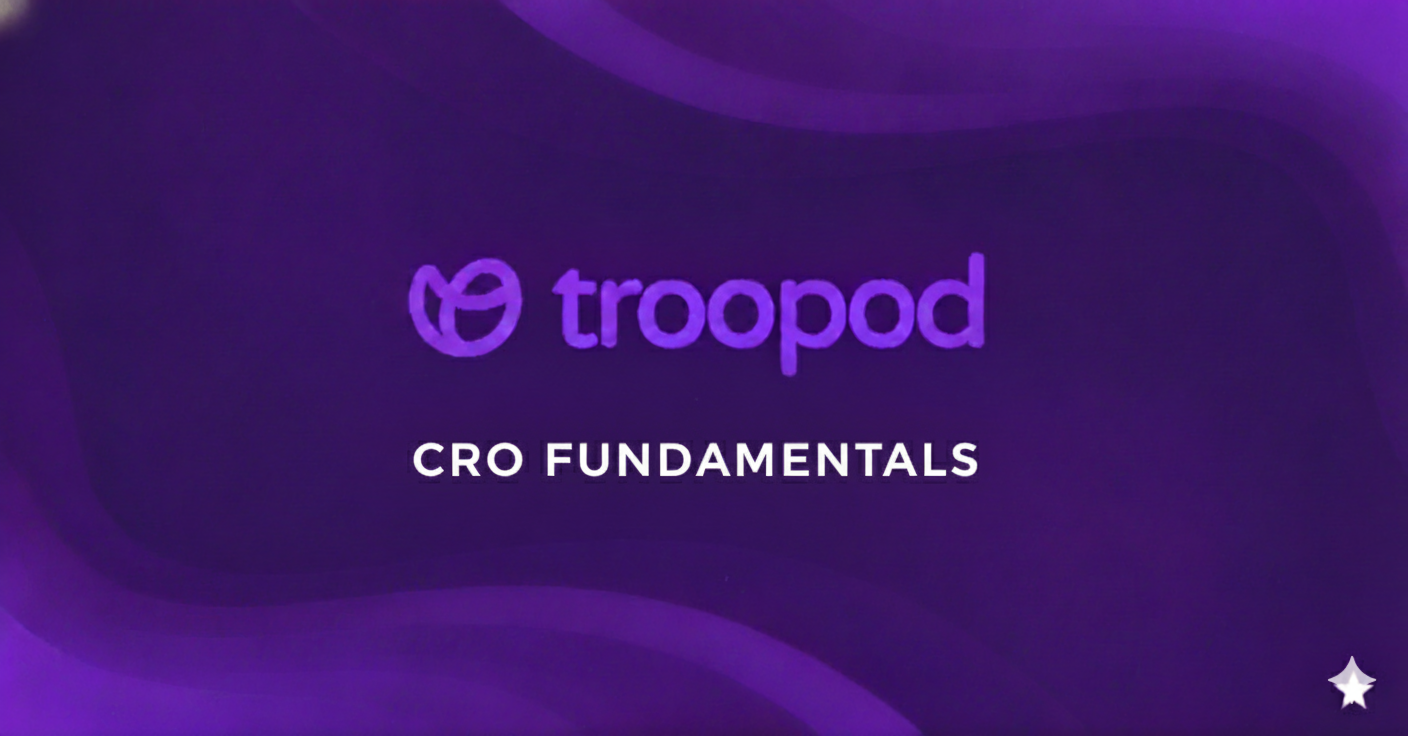
The ₹64 Lakh Mistake: Optimizing the Wrong Metrics
Meet Rajesh, founder of a Bangalore home decor D2C brand (₹12 crores annual revenue).
His "successful" optimization (January-June 2024):
- Metric optimized: Time on site
- Result: 2:14 minutes → 4:38 minutes (+105% improvement!)
- Team celebration: "Users are engaging more!"
- Investment: ₹8.5 lakhs in content, videos, rich media
- Revenue impact: -₹3.2 lakhs monthly (decreased)
What actually happened:
- Users spending more time but not buying more
- Cart abandonment increased from 64% to 72%
- Conversion rate dropped from 2.1% to 1.8%
- Average order value declined from ₹1,840 to ₹1,680
The painful realization: Rajesh optimized engagement but destroyed conversion. Users were spending more time because the site became more confusing, not more compelling.
Cost of wrong focus: ₹64 lakhs in lost revenue over 6 months + ₹8.5 lakhs wasted optimization investment = ₹72.5 lakhs total damage.
His competitor's approach (same period):
- Metrics optimized: The 5 essential CRO metrics (you'll learn in this post)
- Investment: ₹6.2 lakhs
- Conversion: 2.2% → 3.8% (+73%)
- Revenue: +₹42 lakhs monthly = +₹2.52 crores in 6 months
Same timeline. Same vertical. Opposite outcomes.
The difference? Knowing which metrics actually matter for revenue growth.
This is the comprehensive guide to the 5 essential CRO metrics every D2C brand must track—and more importantly, how to improve them systematically.
Ignore these metrics, and you'll optimize yourself into bankruptcy. Master them, and you'll build a conversion engine that prints money.
Why Most Brands Track the Wrong Metrics
The Vanity Metrics Trap
Metrics that feel good but don't pay bills:
Traffic (Visitors):
- "We grew from 45K to 78K monthly visitors!"
- Sounds impressive in board meetings
- Reality: If conversion stays at 1.5%, you just spent more on ads for same results
- What matters: Revenue per visitor, not visitor count
Page Views:
- "Users are viewing 6.4 pages per session!"
- Feels like engagement success
- Reality: High page views often mean users can't find what they want
- What matters: Path to purchase efficiency, not page count
Time on Site:
- "Average session duration is 4 minutes 20 seconds!"
- Seems like deep engagement
- Reality: Could mean confusion, not interest
- What matters: Time to conversion, not time wandering
Bounce Rate:
- "We reduced bounce from 58% to 42%!"
- Looks like improvement
- Reality: If those who stay don't convert, you've achieved nothing
- What matters: Qualified visitor conversion, not just staying
Mumbai Fashion Brand Vanity Metrics Reality:
Q1 2024 (Optimizing vanity metrics):
- Traffic: +67%
- Page views: +84%
- Time on site: +52%
- Bounce rate: -28%
- Conversion rate: 1.9% (unchanged)
- Revenue: +34% (just from more traffic, not better conversion)
- Ad spend: +72% (burned cash for traffic)
- ROI: 47% (decreased from previous 94%)
Q2 2024 (Switch to essential CRO metrics):
- Traffic: +12% (modest)
- Conversion rate: 1.9% → 3.4% (+79%)
- Revenue: +124% (from conversion improvement)
- Ad spend: +15% (modest increase)
- ROI: 207% (4.4x improvement)
Same brand. Different metrics focus. Dramatically different results.
The "We Track Too Much" Problem
Analysis Paralysis:
Average Indian D2C brand dashboard:
- 40-80 metrics tracked
- 12-20 reports generated weekly
- 200+ hours monthly analyzing data
- Result: Overwhelmed, no clear action priorities
Delhi Electronics Brand Before/After:
Before (60 metrics tracked):
- Weekly analytics meeting: 3.5 hours
- Reports reviewed: 15
- Clear action items identified: 2-3
- Implementation rate: 40%
- Conversion improvement: 8% over 6 months
After (5 essential metrics tracked):
- Weekly analytics meeting: 45 minutes
- Reports reviewed: 1 (comprehensive dashboard)
- Clear action items identified: 5-7
- Implementation rate: 85%
- Conversion improvement: 54% over 6 months
Less is more when you track the right metrics.
The 5 Essential CRO Metrics (And Why They Matter)
Metric 1: Conversion Rate (The Revenue Multiplier)
Definition: Percentage of visitors who complete your desired action (purchase, sign-up, demo request).
Formula: Conversion Rate = (Conversions ÷ Total Visitors) × 100
Why It's Essential: Direct correlation to revenue. 1% improvement in conversion = 1% revenue increase with same traffic and ad spend.
Indian D2C Benchmarks (2024-2025):
- Poor: <1.5%
- Below average: 1.5-2.0%
- Average: 2.0-2.8%
- Above average: 2.8-4.0%
- Good: 4.0-6.0%
- Excellent: 6.0-8.0%
- World-class: 8.0%+
Why Most Brands Underperform:
Common conversion killers:
- No mobile optimization (78% of Indian traffic is mobile)
- Generic one-size-fits-all experience
- Poor checkout UX (too many fields, unclear process)
- Weak trust signals (no reviews, security badges)
- Slow page load (>3 seconds kills 40% of conversions)
Bangalore Fashion Conversion Improvement Journey:
Starting point (January 2024): 1.8% conversion
- 42,000 monthly visitors
- 756 monthly orders
- ₹1,280 AOV
- ₹9.68 lakhs monthly revenue
After systematic improvement (June 2024): 3.6% conversion (+100%)
- Same 42,000 visitors
- 1,512 monthly orders
- ₹1,410 AOV (better recommendations)
- ₹21.3 lakhs monthly revenue
- Additional revenue: ₹11.62 lakhs monthly = ₹1.39 crores annually
Changes made:
1. Mobile checkout optimization: +28% conversion
2. Exit-intent popup: +18% additional
3. Homepage personalization: +22% additional
4. Trust badges and reviews: +14% additional
5. Page speed optimization: +12% additional
6. COD for tier 2/3: +8% additional
Compounded effect: +100% total improvement
Investment: ₹4.8 lakhs
ROI: 2,896%
How to Track Effectively:
Overall Conversion Rate: Track this daily. Your north star metric.
Segmented Conversion Rates:
- By device (mobile vs desktop)
- By traffic source (Instagram, Google, email)
- By geography (metro vs tier 2 vs tier 3)
- By visitor type (first-time vs returning)
- By time (weekday vs weekend, time of day)
Mumbai Electronics Segmented Tracking Insight:
Overall conversion: 2.4%
Segments revealed:
- Mobile (72% traffic): 1.6% conversion ← Problem!
- Desktop (28% traffic): 5.2% conversion
- Instagram (48% traffic): 1.4% conversion ← Problem!
- Google (32% traffic): 4.1% conversion
- Metro (44% traffic): 3.8% conversion
- Tier 2 (38% traffic): 1.3% conversion ← Problem!
Action plan:
1. Optimize mobile experience (biggest impact potential)
2. Create Instagram-specific landing pages
3. Tier 2 COD and trust optimization
Result after fixes:
- Mobile: 1.6% → 2.9% (+81%)
- Instagram: 1.4% → 2.6% (+86%)
- Tier 2: 1.3% → 2.4% (+85%)
- Overall: 2.4% → 3.7% (+54%)
Action Triggers:
- Conversion <2%: Critical - immediate action needed
- Conversion declining month-over-month: Investigate immediately
- Conversion variation >50% between segments: Optimization opportunity
Metric 2: Cart Abandonment Rate (The Revenue Leak)
Definition: Percentage of users who add products to cart but don't complete purchase.
Formula: Cart Abandonment Rate = (1 - (Purchases ÷ Add-to-Cart)) × 100
Why It's Essential: Your highest-intent visitors are abandoning. These are qualified leads who almost gave you money. Recovering even 10-20% of them has massive revenue impact.
Indian D2C Reality:
- Average cart abandonment: 68-73%
- Translated: 7 out of 10 people who add to cart leave without buying
- For ₹20 crore brand: ₹40-50 crores in abandoned carts annually
Delhi Beauty Brand Abandoned Cart Math:
Monthly visitors: 85,000
Add-to-cart rate: 8.2% = 6,970 adds
Purchases: 2,090
Cart abandonment: 70%
Abandoned carts: 4,880 monthly
Average cart value: ₹1,680
Abandoned value: ₹82 lakhs monthly
Annual abandoned: ₹9.84 crores
If recovered even 15% through optimization:
Monthly recovered: ₹12.3 lakhs
Annual recovered: ₹1.48 crores
Why Abandonment Happens:
Checkout stage analysis:
- Unexpected costs (35% of abandonment): Hidden shipping fees, taxes revealed late
- Complex checkout (22%): Too many form fields, unclear process
- Payment issues (18%): Preferred method unavailable, security concerns
- Just browsing (12%): Never intended to buy now
- Comparison shopping (8%): Checking competitors
- Technical errors (5%): Bugs, crashes, timeouts
Pune Fashion Abandonment Reduction:
Starting abandonment: 72%
Fixes implemented:
Week 1-2: Transparent pricing upfront
- Show shipping costs on product page
- Display total price before checkout
- Abandonment: 72% → 66%
Week 3-4: Simplified checkout
- Reduced fields from 18 to 9
- Guest checkout option added
- Progress bar showing steps
- Abandonment: 66% → 58%
Week 5-6: Payment optimization
- COD for tier 2/3 traffic
- UPI one-click for mobile
- Multiple payment options
- Abandonment: 58% → 51%
Week 7-8: Exit-intent recovery
- Popup on abandonment attempt
- Time-limited discount offer
- WhatsApp cart reminder
- Abandonment: 51% → 44%
Final result: 72% → 44% (-28 percentage points)
Monthly additional orders: +840
Monthly additional revenue: ₹14.2 lakhs
Annual impact: ₹1.70 crores
Investment: ₹3.2 lakhs
ROI: 5,313%
How to Track and Improve:
Weekly Cart Abandonment Dashboard:
Total add-to-carts: ____
Total purchases: ____
Abandonment rate: ____%
Abandonment by stage:
- Cart page: ____%
- Checkout start: ____%
- Payment page: ____%
Abandonment by segment:
- Mobile: ____%
- Desktop: ____%
- First-time: ____%
- Returning: ____%
Recovery mechanisms:
- Exit-intent recovery: ____%
- Email recovery (1 hour): ____%
- Email recovery (24 hour): ____%
- SMS recovery: ____%
Recovery Tactics by Effectiveness:
Immediate intervention (best ROI):
- Exit-intent popup: 22-35% recovery rate
- WhatsApp reminder button: 18-28% recovery
- "Save cart" email capture: 15-24% recovery
Follow-up sequence:
- Email 1 hour later: 12-18% recovery
- Email 24 hours later: 8-14% recovery
- Email 48 hours later: 4-8% recovery
- SMS reminder: 6-12% recovery
Bangalore Electronics Recovery System:
4,200 monthly cart abandonments
Exit-intent (implemented): 28% recovery = 1,176 orders
Email sequence: 15% additional = 630 orders
WhatsApp (tier 2/3): 12% additional = 504 orders
Total recovery: 2,310 orders (55% of abandoners)
Monthly recovered revenue: ₹38.6 lakhs
Annual recovered: ₹4.63 crores
Previous email-only recovery: 340 orders (8%)
Improvement: 6.8x better recovery
Metric 3: Average Order Value (The Profitability Accelerator)
Definition: Average amount spent per transaction.
Formula: AOV = Total Revenue ÷ Number of Orders
Why It's Essential: Easier to increase AOV by 20% than to increase traffic by 20%. Same customer acquisition cost, higher revenue per customer.
Indian D2C Benchmarks (varies by category):
- Fashion: ₹800-2,400
- Electronics: ₹2,800-8,500
- Beauty: ₹600-1,800
- Home decor: ₹1,200-4,200
- Jewelry: ₹3,500-15,000
The AOV Multiplier Effect:
Mumbai Fashion Brand Math:
Scenario A (Traffic focus):
- Monthly visitors: 50,000 → 65,000 (+30%)
- Conversion: 2.2% (unchanged)
- Orders: 1,100 → 1,430 (+30%)
- AOV: ₹1,400 (unchanged)
- Revenue: ₹15.4L → ₹20L (+30%)
- Ad spend increase: +35% (₹8.4L → ₹11.3L)
- Additional profit: +24% (after ad costs)
Scenario B (AOV focus):
- Monthly visitors: 50,000 (unchanged)
- Conversion: 2.2% (unchanged)
- Orders: 1,100 (unchanged)
- AOV: ₹1,400 → ₹1,820 (+30%)
- Revenue: ₹15.4L → ₹20L (+30%)
- Ad spend increase: 0% (₹8.4L unchanged)
- Additional profit: +30% (no additional costs)
Same revenue increase. Scenario B captures 125% more profit.
How to Increase AOV:
Tactic 1: Product Recommendations
- "Frequently bought together"
- "Complete the look"
- "Customers also purchased"
Delhi Electronics Implementation:
Before recommendations: ₹3,280 AOV
After AI recommendations: ₹4,120 AOV (+26%)
Recommendation acceptance rate: 34%
Monthly additional revenue: ₹18.6 lakhs
Tactic 2: Tiered Free Shipping
- "Add ₹450 more for free shipping"
- "You're ₹280 away from free delivery"
Bangalore Beauty Implementation:
Free shipping threshold: ₹999
Average cart before: ₹840
Average cart after threshold introduced: ₹1,180 (+40%)
% of carts reaching threshold: 68%
Monthly AOV increase: ₹6.2 lakhs additional revenue
Tactic 3: Volume Discounts
- "Buy 2, Save 10%"
- "Buy 3, Save 20%"
- Bundle deals
Pune Fashion Bundle Strategy:
Single item AOV: ₹1,240
Bundle offer AOV: ₹1,890 (+52%)
Bundle acceptance rate: 42%
Margin maintained (volume compensates discount)
Monthly additional: ₹11.8 lakhs
Tactic 4: Upsells & Add-Ons
- At checkout: "Add warranty for ₹299?"
- "Expedited shipping for ₹150?"
- "Gift wrap for ₹99?"
Mumbai Electronics Add-Ons:
Base product AOV: ₹5,200
Average add-ons per order: ₹680
New AOV: ₹5,880 (+13%)
Add-on acceptance: 47%
Monthly additional: ₹8.4 lakhs
Tactic 5: Minimum Order Requirements
- "Orders below ₹500 have ₹80 delivery fee"
- "Free returns on orders above ₹1,000"
Delhi Home Decor Minimum Order:
Before: 28% of orders under ₹600 (low AOV orders)
After minimum encouraged: 11% under ₹600
Average AOV: ₹1,340 → ₹1,620 (+21%)
Cart abandonment increased slightly (+4pp) but compensated by higher AOV
Net monthly revenue: +₹7.2 lakhs
Metric 4: Customer Acquisition Cost (The Sustainability Indicator)
Definition: Total cost to acquire one paying customer.
Formula: CAC = Total Marketing Spend ÷ Number of New Customers
Why It's Essential: If CAC > Customer Lifetime Value, you're losing money on every customer. Sustainable business requires CAC < 30% of LTV ideally.
Indian D2C Reality:
- Average CAC: ₹450-1,200 (depending on category)
- Sustainable CAC: <30% of first purchase value
- Good CAC: <20% of LTV
The CAC Trap:
Bangalore Electronics Journey:
Q1 2023: Early growth phase
- Ad spend: ₹12L monthly
- New customers: 1,800
- CAC: ₹667
- Average first purchase: ₹3,200
- CAC as % of first purchase: 21% (healthy)
- LTV: ₹8,400
- CAC as % of LTV: 8% (excellent)
Q4 2023: Scaling issues
- Ad spend: ₹38L monthly (3.2x increase)
- New customers: 3,800 (2.1x increase)
- CAC: ₹1,000 (50% increase!)
- Average first purchase: ₹2,900 (decreased)
- CAC as % of first purchase: 34% (concerning)
- LTV: ₹7,200 (decreased from churn)
- CAC as % of LTV: 14% (still okay but trending wrong)
Problem: Diminishing returns on ad spend. Quality declining.
Q2 2024: CRO focus implemented
- Ad spend: ₹35L monthly (8% reduction)
- Conversion rate: 1.9% → 3.4% (CRO improvement)
- New customers: 5,100 (34% increase)
- CAC: ₹686 (31% reduction!)
- Average first purchase: ₹3,400 (AOV optimization)
- CAC as % of first purchase: 20% (healthy again)
Key insight: Better conversion reduces CAC without reducing ad spend.
The CRO Impact on CAC:
Simple Math:
Current state:
- Ad spend: ₹20L monthly
- Traffic: 60,000 visitors
- Conversion: 2.0%
- Customers: 1,200
- CAC: ₹20L ÷ 1,200 = ₹1,667
After CRO (same ad spend):
- Ad spend: ₹20L monthly (unchanged)
- Traffic: 60,000 visitors (unchanged)
- Conversion: 3.2% (+60%)
- Customers: 1,920 (+60%)
- CAC: ₹20L ÷ 1,920 = ₹1,042 (-37%)
Same ad spend. 37% cheaper customer acquisition through conversion optimization alone.
Mumbai Fashion CAC Reduction Strategy:
Starting CAC: ₹940
Focus areas:
1. Improve conversion rate (2.1% → 3.6%)
- CAC reduction: 42%
- New CAC: ₹545
2. Increase repeat purchase rate (18% → 32%)
- Reduces dependency on paid acquisition
- Effective CAC: ₹398 (when factoring repeat value)
3. Referral program implementation
- 12% of new customers from referrals (zero paid CAC)
- Blended CAC: ₹350
Overall CAC reduction: 63%
Increased profitability: 220%
Sustainable growth unlocked
How to Track CAC Effectively:
Monthly CAC Dashboard:
Total marketing spend: ₹_____
New customers acquired: _____
Overall CAC: ₹_____
CAC by channel:
- Instagram: ₹_____
- Google Ads: ₹_____
- Facebook: ₹_____
- Email (acquisition): ₹_____
- Referrals: ₹_____
CAC trend:
- This month: ₹_____
- Last month: ₹_____
- 3-month average: ₹_____
- YoY comparison: ₹_____
Health metrics:
- CAC as % of first purchase: _____%
- CAC as % of LTV: _____%
- CAC payback period: ____ months
Warning Signs:
- CAC increasing >10% month-over-month
- CAC >40% of first purchase value
- CAC >25% of LTV
- CAC payback period >6 months
Metric 5: Customer Lifetime Value (The Growth Ceiling)
Definition: Total revenue generated from a customer over their entire relationship with your brand.
Formula: LTV = (Average Order Value × Purchase Frequency × Customer Lifespan) - CAC
Simplified: LTV = Average Order Value × Average Orders per Customer
Why It's Essential: LTV determines how much you can afford to spend acquiring customers. Higher LTV = ability to outbid competitors for customer acquisition = market dominance.
Indian D2C Benchmarks:
- Poor: LTV/CAC ratio <2:1
- Below average: 2:1 to 3:1
- Average: 3:1 to 4:1
- Good: 4:1 to 6:1
- Excellent: 6:1 to 10:1
- World-class: >10:1
Delhi Beauty Brand LTV Journey:
Starting point (Q1 2024):
- Average first purchase: ₹840
- Repeat purchase rate: 16%
- Average second purchase: ₹720
- Third purchase rate: 8%
- Customer lifespan: 1.3 purchases
- LTV: ₹1,092
- CAC: ₹580
- LTV/CAC ratio: 1.88:1 (poor - unsustainable)
After CRO + retention focus (Q4 2024):
- Average first purchase: ₹1,120 (AOV optimization)
- Repeat purchase rate: 38% (email automation, personalization)
- Average second purchase: ₹980 (better recommendations)
- Third purchase rate: 22%
- Fourth+ purchase rate: 12%
- Customer lifespan: 2.1 purchases
- LTV: ₹2,352
- CAC: ₹480 (improved conversion reduced CAC)
- LTV/CAC ratio: 4.9:1 (good - sustainable growth)
LTV improvement: 115%
Business transformed from struggling to thriving
How to Increase LTV:
Strategy 1: Increase Purchase Frequency
Tactics:
- Post-purchase email sequences
- Personalized product recommendations
- Loyalty programs
- Subscription options for consumables
- Reorder reminders
Bangalore Electronics Results:
Before: Average 1.4 purchases per customer
After retention program: 2.3 purchases per customer (+64%)
Retention tactics:
- Day 30 email: "How's your [product]?" + recommendation
- Day 60: "Accessories you might need"
- Day 90: "Upgrade available"
- Day 120: "Refer a friend for ₹500 credit"
Repeat purchase rate: 22% → 47%
LTV: ₹4,680 → ₹7,560 (+62%)
Strategy 2: Increase Average Order Value (See Metric 3 above for detailed tactics)
Strategy 3: Extend Customer Lifespan
Tactics:
- Exceptional customer service
- Proactive issue resolution
- Exclusive member benefits
- Community building
- Content that adds value beyond products
Pune Fashion Community Building:
Before: Average customer lifespan 8.4 months
After community program: 18.7 months (+123%)
Program elements:
- Private Facebook group
- Styling tips and fashion content
- Early access to new collections
- Member-only sales
- Style challenges with prizes
Customer retention at 12 months: 34% → 68%
LTV: ₹2,240 → ₹4,180 (+87%)
Community maintenance cost: ₹48K monthly
Additional LTV value: ₹28.6L monthly
ROI: 5,958%
Strategy 4: Reduce Churn
Churn reasons and solutions:
- Product dissatisfaction → Better product quality + accurate descriptions
- Poor service → Invest in customer support
- Better competitor offer → Build unique value proposition
- Forgot about brand → Regular engagement email campaigns
- Price sensitive → Loyalty rewards and exclusive discounts
Mumbai Home Decor Churn Reduction:
Churn analysis:
- 32% churned after first purchase (never returned)
- Main reasons: Delivery issues (38%), product mismatch (42%), forgot about us (20%)
Solutions:
- Delivery issues: Upgraded logistics partner
- Product mismatch: Better product photos + AR visualization
- Brand awareness: Email nurture sequence
Churn after first purchase: 32% → 18%
Second purchase rate: 28% → 52%
LTV: ₹2,820 → ₹4,440 (+57%)
The 5-Metric Dashboard: Your Weekly CRO Scorecard
Weekly Review Template:
WEEK OF: [Date]
METRIC 1: CONVERSION RATE
Current: ____%
Last week: ____%
Change: ____% (↑/↓)
Target: ____%
Status: 🟢 On track / 🟡 Warning / 🔴 Action needed
Top converting segment: ______ (___%)
Worst converting segment: ______ (___%)
Action plan: __________________
METRIC 2: CART ABANDONMENT
Current: ____%
Last week: ____%
Change: ____% (↑/↓)
Target: ____%
Status: 🟢 On track / 🟡 Warning / 🔴 Action needed
Abandonment by stage:
- Cart page: ____%
- Checkout: ____%
- Payment: ____%
Recovery rate: ____%
Action plan: __________________
METRIC 3: AVERAGE ORDER VALUE
Current: ₹_____
Last week: ₹_____
Change: ₹_____ (↑/↓)
Target: ₹_____
Status: 🟢 On track / 🟡 Warning / 🔴 Action needed
Upsell acceptance: ____%
Bundle rate: ____%
Action plan: __________________
METRIC 4: CUSTOMER ACQUISITION COST
Current: ₹_____
Last week: ₹_____
Change: ₹_____ (↑/↓)
Target: ₹_____
Status: 🟢 On track / 🟡 Warning / 🔴 Action needed
CAC as % of first purchase: ____%
Most efficient channel: ______
Action plan: __________________
METRIC 5: CUSTOMER LIFETIME VALUE
Current: ₹_____
Last month: ₹_____
Change: ₹_____ (↑/↓)
Target: ₹_____
Status: 🟢 On track / 🟡 Warning / 🔴 Action needed
LTV/CAC ratio: ____:1
Repeat purchase rate: ____%
Action plan: __________________
OVERALL REVENUE HEALTH
Monthly recurring revenue: ₹_____
New customer revenue: ₹_____
Repeat customer revenue: ₹_____
Total revenue: ₹_____
Growth vs last month: ____%
TOP 3 PRIORITIES THIS WEEK:
1. __________________
2. __________________
3. __________________
The Bottom Line: Track Less, Achieve More
The 80/20 Rule of CRO Metrics:
These 5 metrics drive 80%+ of your revenue growth:
- Conversion rate - directly multiplies revenue
- Cart abandonment - recovers high-intent revenue
- Average order value - increases profitability per customer
- Customer acquisition cost - ensures sustainability
- Customer lifetime value - determines growth ceiling
Everything else is supporting data or vanity metrics.
The Bangalore Electronics Transformation:
Before (tracking 60+ metrics):
- Analysis paralysis
- No clear priorities
- Random optimization attempts
- 6-month conversion improvement: 12%
After (5 essential metrics only):
- Crystal clear priorities
- Systematic improvement
- Data-driven decisions
- 6-month conversion improvement: 94%
Same team. Same budget. 7.8x better results.
Master these 5 metrics, and you'll build a conversion engine that consistently grows revenue quarter after quarter.
Ignore them, and you'll optimize yourself into oblivion while wondering why revenue stays flat.
The choice is yours.
Related Reading from Troopod
What is Conversion Rate Optimization? A Beginner's Guide Complete CRO fundamentals for D2C founders
AI vs Traditional CRO: Why Your Manual A/B Tests Are Wasting Time & Money Understanding modern CRO approaches that actually work
Why Personalization Should Be Your #1 Priority in 2025 The biggest lever for improving all 5 essential metrics simultaneously
About Troopod: We're an AI-powered CRO platform built for Indian D2C brands. Our dashboard automatically tracks these 5 essential metrics (plus 40+ supporting metrics) and provides AI-powered recommendations for improvement. Brands using Troopod improve their conversion rate by an average of 127% in 90 days.
Ready to master your CRO metrics?


